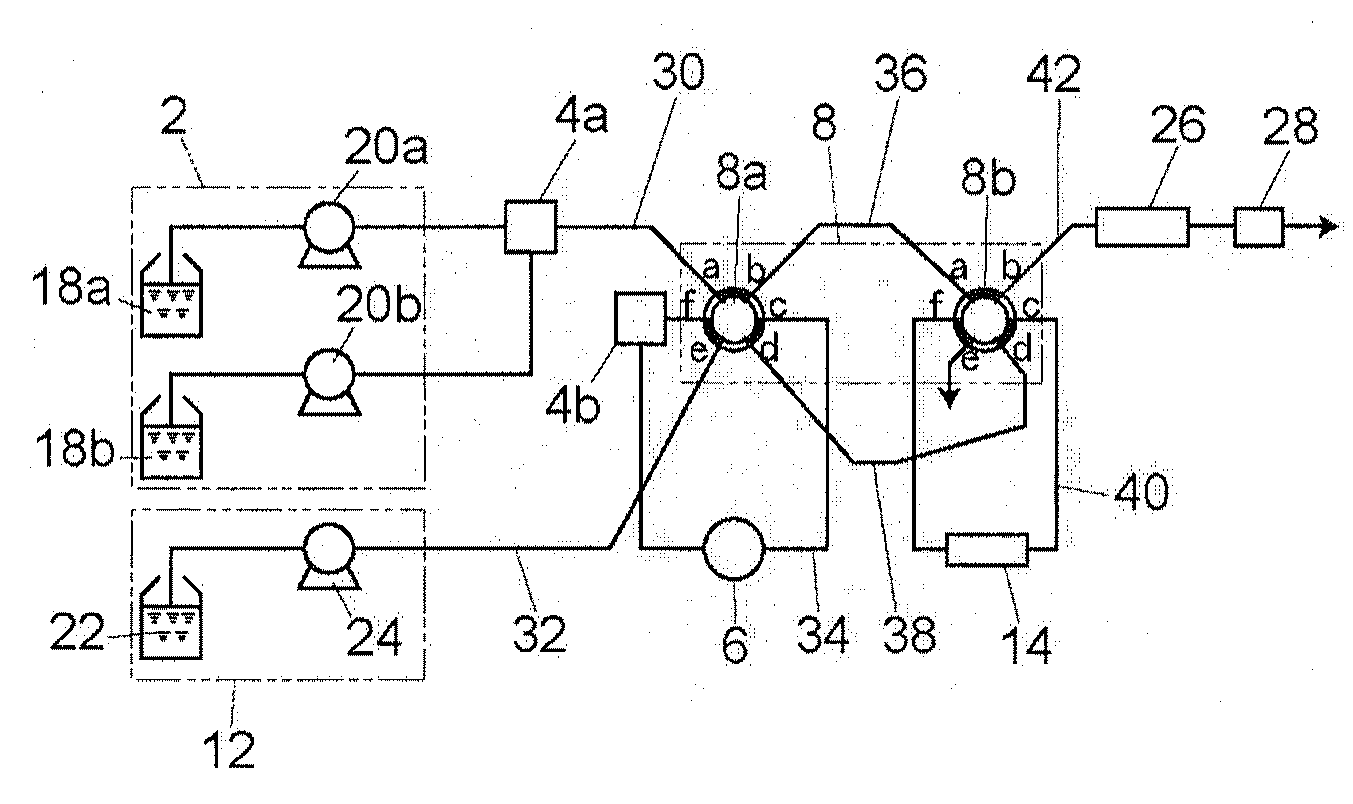Liquid chromatograph
a liquid chromatograph and chromatograph technology, applied in the field of liquid chromatographs, can solve the problems of reducing separation performance, difficult to achieve highly sensitive analysis, complicated change in flow passage configuration, etc., and achieve the effect of improving analytical reproducibility and promoting solvent mixing
- Summary
- Abstract
- Description
- Claims
- Application Information
AI Technical Summary
Benefits of technology
Problems solved by technology
Method used
Image
Examples
Embodiment Construction
[0022]Hereinafter, a liquid chromatograph according to one embodiment of the present invention will be described. FIG. 1 is a diagram specifically showing the flow passage configuration of the liquid chromatograph according to one embodiment of the present invention.
[0023]A flow passage switching mechanism 8 has two first and second flow passage switching valves 8a and 8b as multi-port valves. The flow passage switching valves 8a and 8b are two-position six-port valves each having six ports numbered a to f clockwise. Each of the flow passage switching valves 8a and 8b is set to allow the ports a and b adjacent to each other to be connected to each other, the ports c and d adjacent to each other to be connected to each other, and the ports e and f adjacent to each other to be connected to each other at the same time and to allow, at another timing, the ports a and f adjacent to each other to be connected to each other, the ports b and c adjacent to each other to be connected to each ...
PUM
| Property | Measurement | Unit |
|---|---|---|
| flow rate | aaaaa | aaaaa |
| flow rate | aaaaa | aaaaa |
| flow rate | aaaaa | aaaaa |
Abstract
Description
Claims
Application Information
 Login to View More
Login to View More - R&D
- Intellectual Property
- Life Sciences
- Materials
- Tech Scout
- Unparalleled Data Quality
- Higher Quality Content
- 60% Fewer Hallucinations
Browse by: Latest US Patents, China's latest patents, Technical Efficacy Thesaurus, Application Domain, Technology Topic, Popular Technical Reports.
© 2025 PatSnap. All rights reserved.Legal|Privacy policy|Modern Slavery Act Transparency Statement|Sitemap|About US| Contact US: help@patsnap.com



